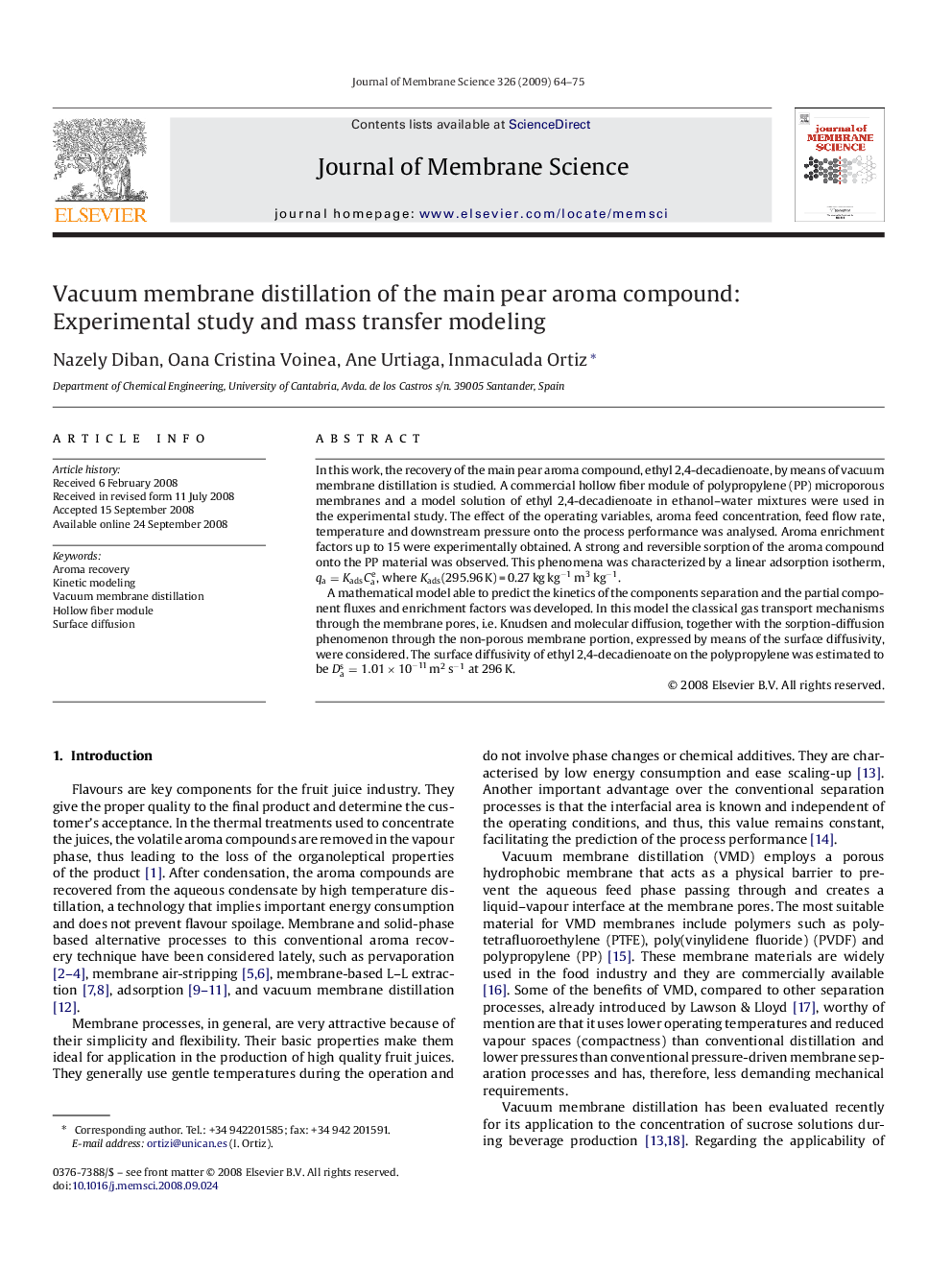| Article ID | Journal | Published Year | Pages | File Type |
|---|---|---|---|---|
| 637254 | Journal of Membrane Science | 2009 | 12 Pages |
In this work, the recovery of the main pear aroma compound, ethyl 2,4-decadienoate, by means of vacuum membrane distillation is studied. A commercial hollow fiber module of polypropylene (PP) microporous membranes and a model solution of ethyl 2,4-decadienoate in ethanol–water mixtures were used in the experimental study. The effect of the operating variables, aroma feed concentration, feed flow rate, temperature and downstream pressure onto the process performance was analysed. Aroma enrichment factors up to 15 were experimentally obtained. A strong and reversible sorption of the aroma compound onto the PP material was observed. This phenomena was characterized by a linear adsorption isotherm, qa=KadsCae, where Kads(295.96 K) = 0.27 kg kg−1 m3 kg−1.A mathematical model able to predict the kinetics of the components separation and the partial component fluxes and enrichment factors was developed. In this model the classical gas transport mechanisms through the membrane pores, i.e. Knudsen and molecular diffusion, together with the sorption-diffusion phenomenon through the non-porous membrane portion, expressed by means of the surface diffusivity, were considered. The surface diffusivity of ethyl 2,4-decadienoate on the polypropylene was estimated to be Das=1.01×10−11 m2 s−1 at 296 K.
